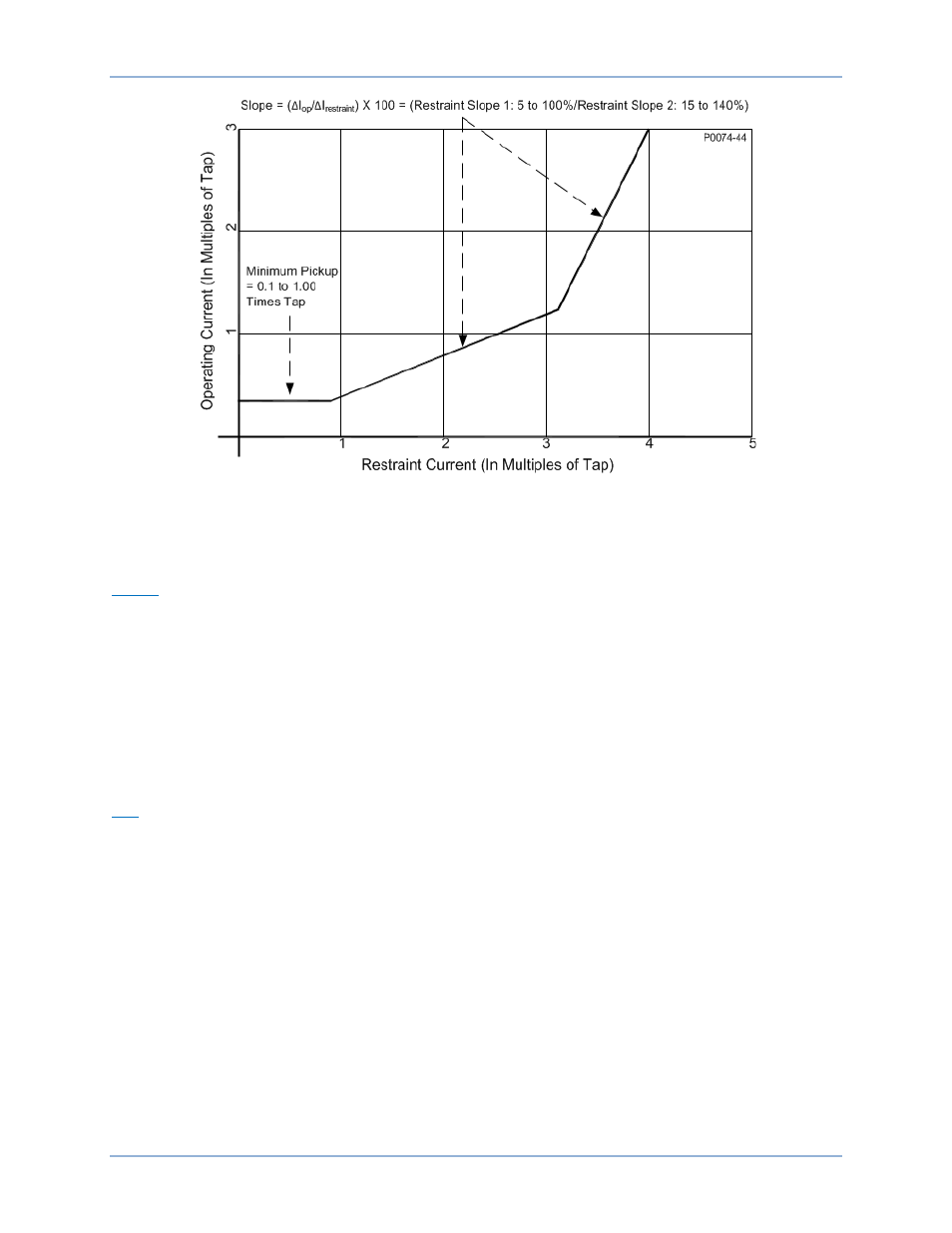Pickup and trip, Transient monitor, Figure 69 – Basler Electric BE1-11g User Manual
Page 123

9424200994 Rev N
111
Figure 69. Percentage Restrained Differential Characteristic
Pickup and Trip
The Pickup output occurs first, followed by the Trip output.
Pickup
The Pickup output becomes true when the ratio of operating current to restraint current increases above
the slope setting. The operating current is greater than the Minimum Restrained Pickup setting in any of
the three phases. In BESTlogicPlus, the Pickup output can be connected to other logic elements to
annunciate the condition, control other elements in logic, and start the fault recorder (logic element
FAULTTRIG).
Assertion of the Pickup output initiates a timer that begins timing to a trip. The duration of the timer is
established by the Time Delay setting.
If the pickup condition subsides before the element delay expires, the timer and Restrained Pickup output
are reset, no corrective action is taken, and the element is rearmed for any other fault conditions.
Trip
The Trip output becomes true when a restrained pickup condition persists for the duration of the element
Time Delay setting. In BESTlogicPlus, the Trip output can be connected to other logic elements and to a
physical relay output to annunciate the condition and to initiate corrective action. If the target is enabled
for the element, the BE1-11g will record a target when either the Trip or Unrestrained Trip outputs
become true. See the
chapter for more information about target reporting.
Transient Monitor
A transient monitor detects the effects of CT saturation during a through fault. The 87 element monitors
the change in restraint current versus the change in operate current. For an internal fault, the restraint
current and operate current will experience a step increase at the same time. For an external fault, there
should be no operate current. If CT saturation occurs during a through fault, the operate current will
increase at some time after the restraint current increases.
The restrained or unrestrained differential must be picked up for the transient monitor to detect transient.
The Transient Operate Time setting defines how long the transient remains detected after the restrained
or unrestrained differential drops out. The Transient Delay setting affects only the restrained Trip output.
BE1-11g
0BPhase Current Differential (87) Protection
